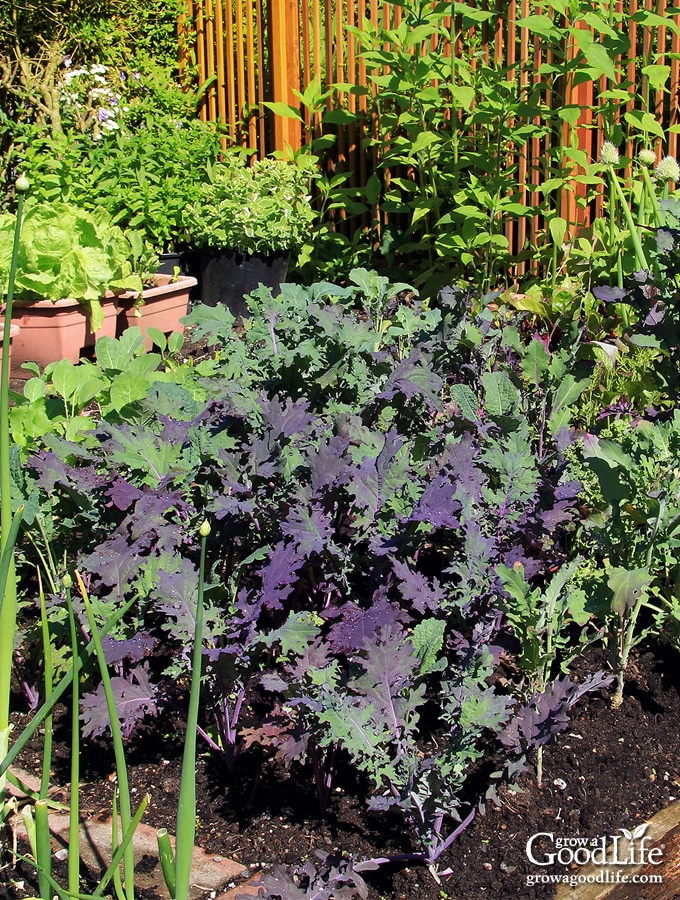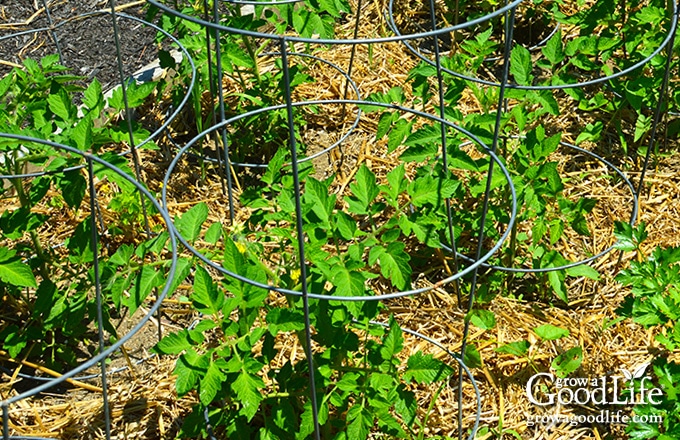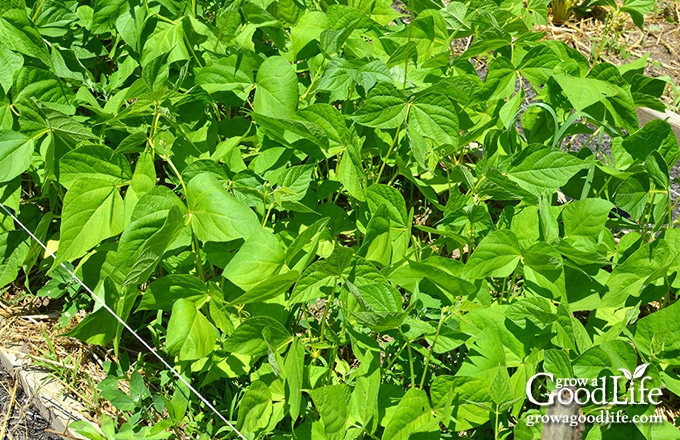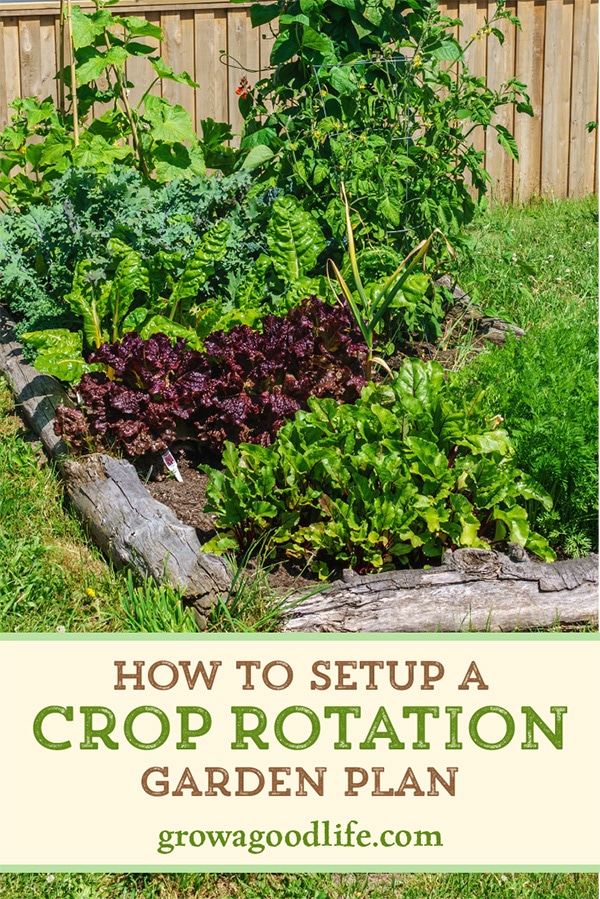Benefits of Crop Rotation for Your Vegetable Garden
This post may contain affiliate links, which means that I may receive a commission if you make a purchase using these links. As an Amazon Associate I earn from qualifying purchases.
Crop rotation is a great way to maintain healthy soil and reduce pests and diseases in the organic vegetable garden. Discover the benefits of crop rotation and how to apply it to your backyard vegetable garden.

Growing the same crop in the same location year after year makes the crops an easy target for pests and diseases. Vegetables that are in the related plant families use similar nutrients and are vulnerable to the same insects and pathogens.
While we often see large farms growing the same crops each year for commercial use, we also see those fields being sprayed with chemical fertilizer, insecticide, fungicide, spectracide, and herbicides.
Crop rotation involves moving the growing location of plant families in the garden each season. Planting different crop families from year to year in different areas to avoid depleting the soil of nutrients and prevent crop specific pests and diseases from building up from one season to the next.
What is Crop Rotation?
Crop rotation is simply changing the location where botanically related families are grown every year so no single crop will be planted in the same place. This allows the soil to regenerate and prevents pests and diseases from infecting the plants from year to year.
Most vegetables can be grouped into botanically related plant families. Plants that are in the same family are often susceptible to the same insect pests and diseases, and have similar nutrient requirements.
Growing crop families in different areas from year to year helps reduce damage from pests, limits the development of vegetable diseases, and manages soil fertility.
For example, tomatoes are highly susceptible to early blight, tobacco mosaic virus, and tomato horn worms. These diseases and pest eggs can over winter in the garden soil and attack young tomato plants next spring if they are planted in the same location.
It takes about three years for tomato-specific diseases and pests to die out. By using crop rotation, a crop that depletes the soil of one kind of nutrient is followed the next growing season by a non-related crop that returns that nutrient to the soil.

Benefits of Crop Rotation
Planting crops in different garden locations every year helps your garden soil stay healthy. It interrupts the cycle of pests and diseases, supports regenerating nutrients naturally, and improves soil structure.
Pest Control
Crops that belong to the same family are often susceptible to similar pests. Most pests feed on your plants, and then drop to the soil to hibernate or lay eggs.
If the plants are grown in the same location the following year, these pests can feed on the crop again and may even grow stronger in numbers.
Growing your crops in different locations each year prevent pests from finding your plants early in the season. Using crop rotation will help to keep the number of insect pests at low levels.
Prevents Disease
Many disease-causing organisms, or pathogens attack specific plant families can over winter in the soil. If you grow vegetables in the same botanical family in the same area of a garden year after year, it provides the pathogens with a constant source of plant host to infect. Over time, diseases build up and increase damage to the plants.
Moving that crop family to another garden location each season will cause many of the disease pathogens to starve and die.
Regenerates Soil Nutrients
The type of vegetable grown in a particular area in a garden has a direct effect on the fertility of the soil in that area. Each vegetable family is unique in the type and amount of nutrients it extracts from the soil.
Planting the same crop family in the same location year after year depletes the soil of certain nutrients. Rotating different plant families will allow nutrients to replenish.
All crops take something away from the soil, but some plants improve soil quality as well. Planting specific crops as part of the rotation process can amend soil fertility and structure.
Peas, legumes, clover, and nasturtiums are helpful for increasing the nitrogen in garden soil and are great for use as a winter cover crop. When the plants are finished growing and turned into the soil, they provide organic matter and nutrients as they break down helping the soil regenerate and rebuild the nutrients.
Crop rotation balances the loss of different soil nutrients and allows time for nutrients to replenish.

Improves Soil Structure
The roots of plants help improve soil structure by growing into the soil allowing air and water to penetrate. If you plant shallow rooting leafy greens in the same place year after year, only the top layer will remain friable.
Soil structure can be improved by alternating deep rooted and shallow rooted plants as part of the rotation process.
Planting deep rooting plants, such as corn, carrots, daikon radishes, and turnips loosens the soil and prevent compaction. Deep rooting crops can also draw up nutrients, making them available for shallow rooted crops the following year.

The Three-Year Rule for Rotating Crops
Crop rotation does not have to be complicated. The basic concept is to plant everything in a different garden location from where it grew last year. A simple three-year crop rotation plan gives the soil time to regenerate.
Rotate crops each year so that vegetables in the same family are not grown in the same place for three years. This will give sufficient time for soil pathogens and plant-specific pest eggs to die and the garden soil healthy enough to sustain the crop planted.
How to Plan Crop Rotation in a Small Garden
Create a garden planting map each year showing where everything is planted in the garden.
Sketching the garden plan on paper or computer also provides a record of what was located in each area from year to year. So you don’t have to rely on memory, or accidentally plant something in the same vegetable family in the same location within three years.
Always refer to the previous year’s garden plan to ensure you are not planting related crops in the same location.
In my backyard vegetable garden, I focus on six vegetable plant families for rotation planning purposes:
- Alliaceae Family: Includes alliums that grow from bulbs, including chive, garlic, leeks, onions, scallions, and shallots.
- Amaranthaceae Family: The leafy green vegetables including arugula, beets, kale, lettuce, mustard greens, spinach, Swiss chard, and watercress.
- Brassicaceae Family: Includes cruciferous vegetables such as broccoli, bok choy, Brussels sprouts, cabbage, cauliflower, collards, kohlrabi, radish, rutabaga, and turnip.
- Cucurbitaceae Family: Also called cucurbits or the gourd family includes cucumbers, melons, pumpkins, squash, and watermelon.
- Fabaceae Family: Encompasses all legumes, including peas, peanuts, chickpeas, snow peas, beans, soybeans, lentils, fenugreek, alfalfa, and clover.
- Solanaceae Family: Also known as nightshade plants, include chilies, eggplants, peppers, potatoes, tomatillos, and tomatoes.
I group the plants in each family together and plant in the same growing beds, so it is easy to move them as a group to a different bed the following year.
Other vegetables such as corn, carrots, and herbs are worked in where there is room, but I try not to plant them in the same spots two years in a row.
If you don’t have raised beds, you can easily rotate crops by moving everything over by three rows or three feet in the garden. This will provide enough distance to prevent plant-specific pathogens and pests from migrating to their favorite garden plants.
Crop rotation doesn’t have to be complicated. There is only one guideline to follow: don’t plant vegetables in the same family in the same location for three years.
Simply re-arrange the garden layout plan each year to plant everything in a different garden location from where it grew last year. Always check the plant family before re-planting crops to be sure you’re not planting related crops in the same location.
—
Crop rotation is a great way to maintain healthy soil in the organic vegetable garden. Changing the location of where crops are planted every year makes garden soil healthier, more fertile, less prone to pest and disease attacks, and reduces the need to use chemicals in the garden.
Do you rotate your crops from year to year? We’d love to hear your tips in the comments.
You May Also Like:
- 7 Ways to Improve Garden Soil
- Planning the Vegetable Garden: Mapping the Garden Beds
- Choosing Crops to Grow in the Vegetable Garden
Good planning is key to a successful vegetable garden
Whether you are new to growing your own food or have been growing a vegetable garden for years, you will benefit from some planning each year. You will find everything you need to organize and plan your vegetable garden in my PDF eBook, Grow a Good Life Guide to Planning Your Vegetable Garden.



Hey Rachel, I totally agree. I remember the first time crop rotation was explained to me. Back then, it was a more technical form which didn’t make any sense. Interestingly, it was my wife who as eavesdropping who understood. She’s into health and fitness and basically explained that crop rotation was like doing different workouts. To a degree it was to keep the body guessing so you don’t get stuck and it also allows the body parts you worked out to get rest and recover before going through another workout. So basic, but it’s very similar to why rotating where you plant helps.